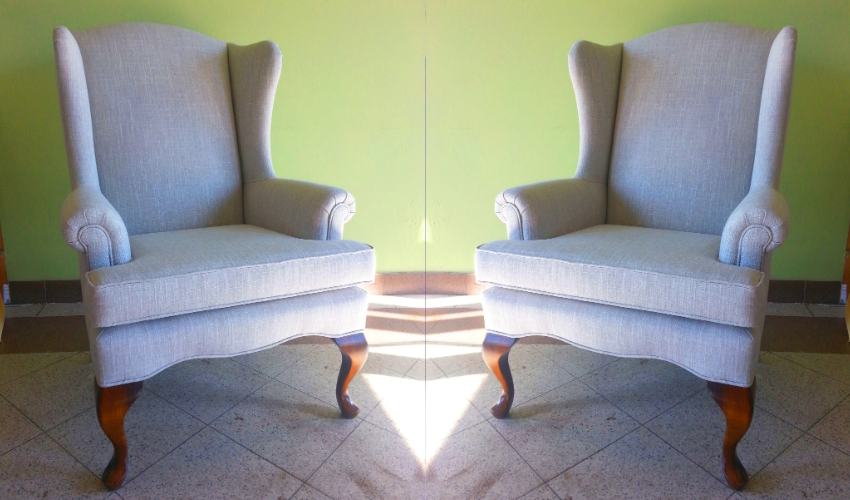Artificial grass has become extremely popular as an attractive and low-maintenance substitute for real grass. Installing it on concrete surfaces is only one of its many uses. Installing fake grass on concrete might be a great alternative if you want to turn a plain concrete patio, balcony, or driveway into a lush green area. This manual will take you step-by-step through the process of properly How can you lay artificial grass on concrete and stone, resulting in a stunning and durable end product.
8 Simple Steps To Lay Artificial Grass On Concrete
Step 1: Preparing The Concrete Surface
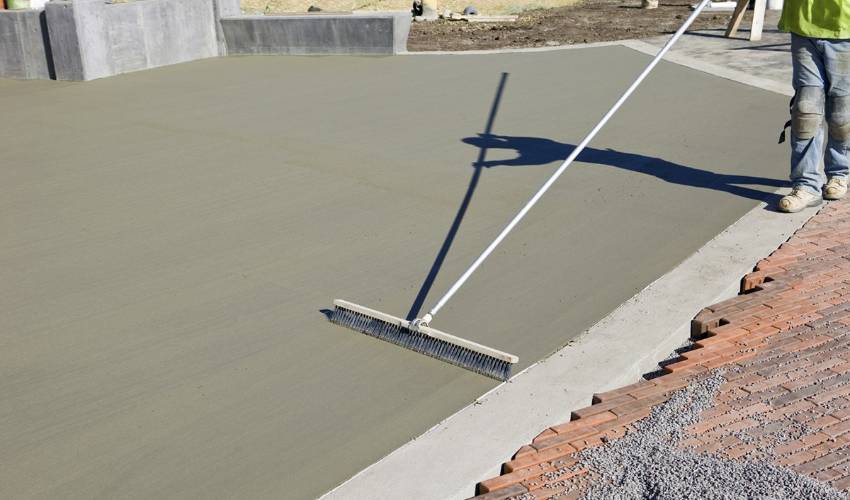
It is essential to carefully prepare the concrete surface before you begin the installation process. Take these actions:
- Clean The Surface
To get rid of clutter, grime, and other loose particles, sweep and clean the concrete completely. A pressure washer can also be used to clean more thoroughly.
- Check For Drainage
Analyze the concrete surface’s ability to drain water. To keep water from accumulating and possibly harming the fake grass, proper drainage is crucial. Use a grinder to cut small drainage channels if necessary.
- Repair Cracks And Imperfections
Use a suitable filler or patching product to repair any cracks or flaws in the concrete. To get a flawless finish, let the surface entirely dry before sanding it.
- Apply A Weed Barrier
Lay a weed barrier cloth over the concrete area to stop weeds from growing through the artificial grass.
Step 2: Gather Necessary Materials And Tools
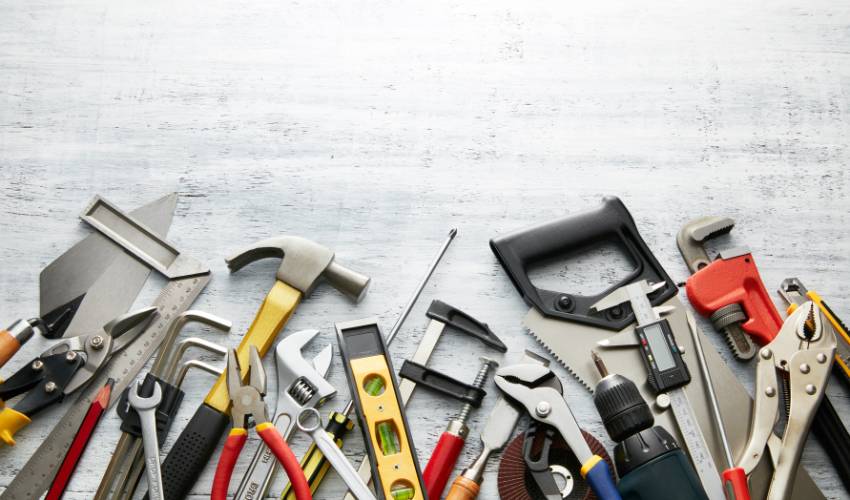
Make sure you have all the materials and tools required for the installation process:
- Artificial grass
- Weed barrier fabric
- Double-sided adhesive tape or adhesive glue
- Utility knife
- Broom or brush
- Measuring tape
- Stiff bristle brush
- Infills (Optional for added stability and cushioning)
Step 3: Measuring And Cutting The Artificial Grass
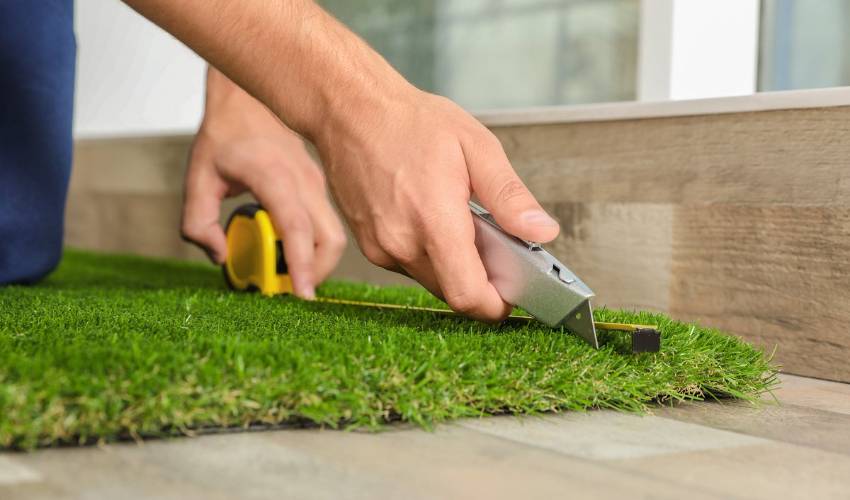
1. Measure The Area
Measure the area of your concrete surface where you want to install the Artificial grass to get started. For exact measurements use a measuring tape. Calculate the length and width of the area in feet or meters.
2. Plan The Grass Layout
Choose the direction you want the fibers of fake grass to face. For a natural appearance, they should normally face in the same direction.
3. Unroll The Artificial Grass
The fake grass should be spread out in the fiber’s chosen direction. Make sure to fill the measured space, leaving a small overhang at the edges. Later, this overhang will be cut.
4. Mark And Cut
- Mark the edges of the artificial grass where you need to make cuts with chalk or spray paint. Ensure that the markers are distinct and easy to see.
- Lift the fake grass on one side slowly to reveal the concrete floor below.
- Put a straightedge on the designated path. This will act as a cutting guide to guarantee a precise and straight cut.
- Carefully cut along the drawn line using a utility knife or carpet cutter. When cutting, use consistent pressure to produce a crisp, clean edge to cut through the backing without harming the glass blades. Repeat this operation on both sides of the fake grass.
Step 4: Installing The Artificial Grass On Concrete
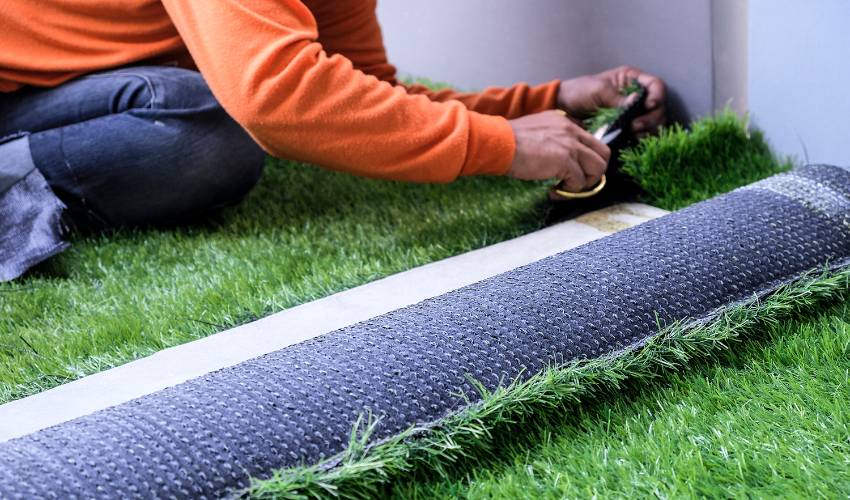
- Make sure the entire concrete surface is covered with the weed barrier fabric as you lay it down.
- Over the weed barrier, spread the cut fake grass. The location should be adjusted to ensure an even overhang on all sides.
- If using double-sided sticky tape, secure the edges of the fake grass by running the tape around its perimeter. To ensure a solid binding, apply forceful pressure.
- If using glue, spread an even, thin layer of glue along the fake grass’s edge to make sure the edges are secure, and press them firmly into the adhesive.
Step 5: Trimming And Securing The Edges
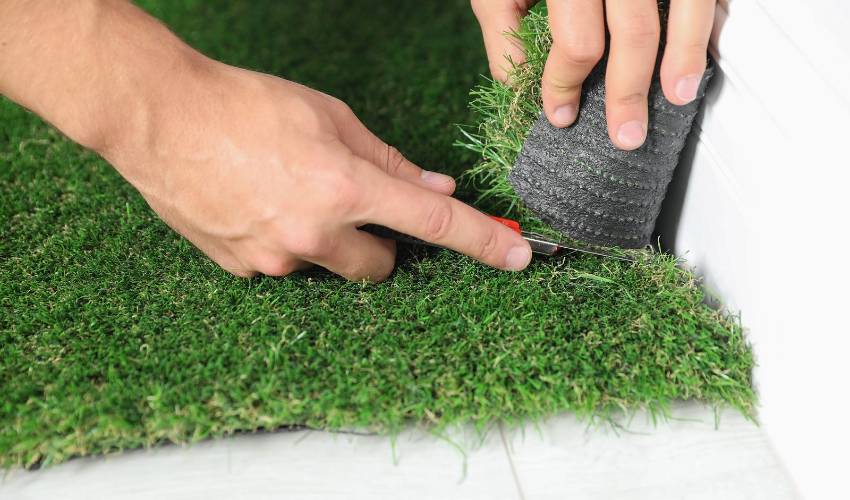
- Trim any extra artificial grass along the margins by using a utility knife and the concrete surface’s contours as your guide.
- Depending on the method you choose, tape or glue should be used to secure the trim
Step 6: Adding Infill (Optional)
- To give the artificial grass stability, comfort, and a natural feel, if desired, you can add infill material.
- A stiff-bristle brush or a specialized infill spreader can be used to evenly distribute the infill over the grass.
Step 7: Brushing And Fluffing The Grass

- Brush and fill up the fibers of the fake grass by using a broom or brush. By doing this, the grass blades will be more stable and the installation will look more natural.
Step 8: Final Touches And Maintenance Tips

- To create a tidy and even appearance, carefully trim any leftover uneven grass fibers.
- To get rid of any leftover particles, hose down the artificial grass.
- To keep the grass standing straight and avoid matting, brush it frequently.
- If you have used infill, make sure to regularly replenish it to keep it functional.
Coming To An End
Concrete surfaces can be covered with fake grass to transform any drab, uninviting areas into lively, low-maintenance places that resemble the appearance and feel of real grass. You can create a polished installation that not only improves the aesthetic appeal of your area but also offers a comfortable and long-lasting surface for a variety of activities by carefully following the detailed instructions provided in this guide. Artificial grass on concrete is a practical and aesthetically beautiful option that takes little effort, allowing you to make the most of your outside space, whether it’s a patio, balcony, or driveway.








